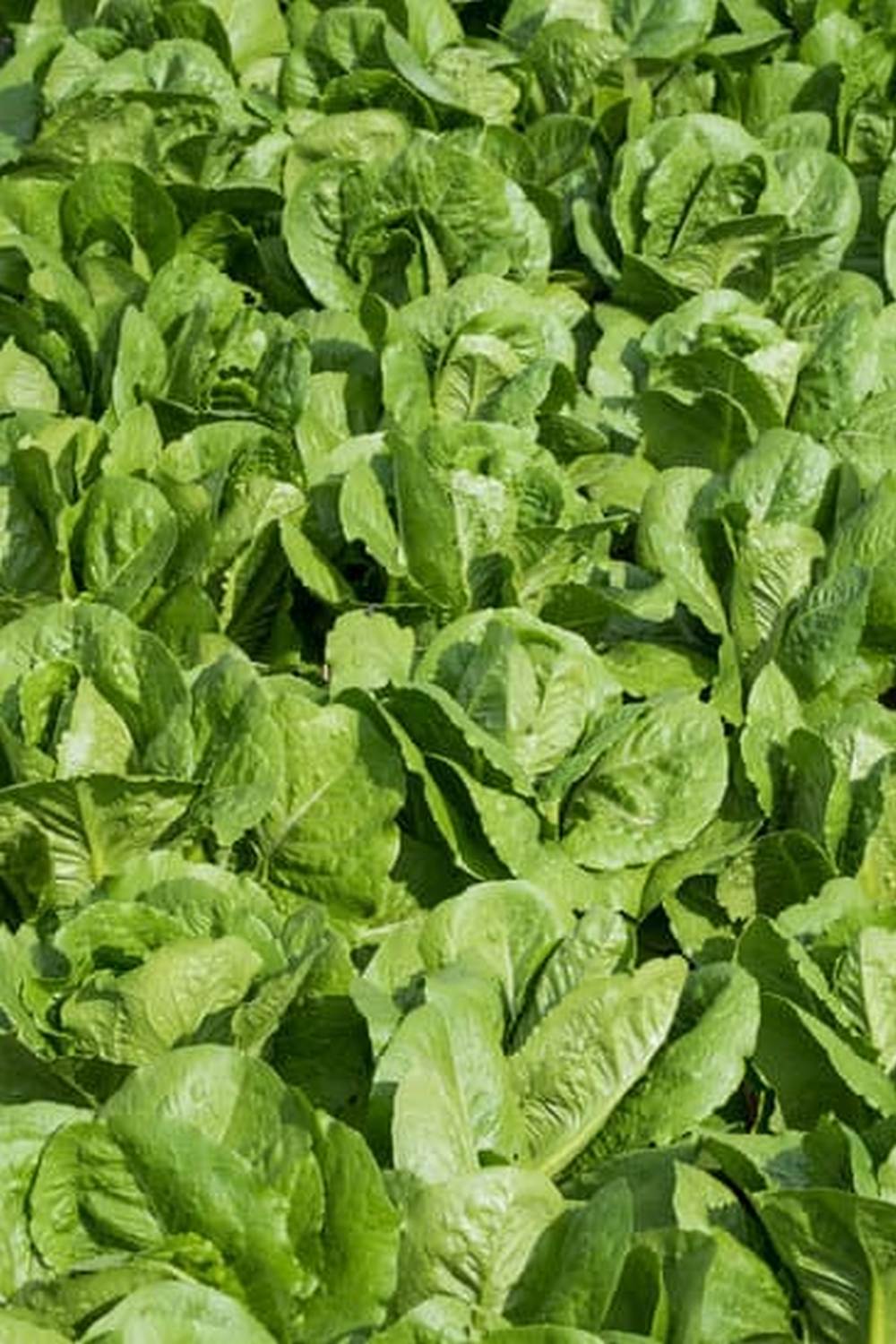Are you interested in starting your own vegetable garden but don’t have the space or the right soil for it? Building raised bed gardens vegetable could be the perfect solution for you. Raised bed gardens offer many advantages, from improved soil quality to better drainage and easier maintenance. In this article, we will guide you through the process of planning, building, and maintaining a successful raised bed garden for your favorite vegetables.
When it comes to creating a raised bed garden, one of the first things to consider is the location and size of your garden. We’ll discuss how to choose the right spot for your raised bed, as well as how to determine its ideal dimensions. Additionally, we’ll provide tips on selecting the best vegetables for raised bed gardens, including considerations and recommendations to ensure a successful harvest.
Once you’ve planned out your raised bed garden, it’s time to roll up your sleeves and start building. Our step-by-step guide will walk you through the construction process and help you select the best materials for your project.
And don’t worry if you’re new to gardening – we’ll also cover soil preparation, fertilization, planting techniques, pest control strategies, harvesting tips, and long-term maintenance. Follow along to learn how easy and rewarding it can be to grow your own delicious vegetables in a raised bed garden.
Planning Your Raised Bed Garden
When planning to build raised bed gardens for vegetables, one of the most crucial aspects to consider is choosing the right location and size. The location will directly impact the success of your garden, while the size will determine the amount and variety of vegetables you can grow.
Choosing the Right Location
When selecting a location for your raised bed garden, it’s essential to choose a spot that receives at least 6-8 hours of sunlight per day. Sunlight is crucial for the growth and development of most vegetable plants. Additionally, consider factors such as proximity to water source, accessibility for maintenance, and protection from strong winds.
Determining the Size
The size of your raised bed garden will depend on several factors, including available space, the number of vegetables you want to grow, and your ability to tend to the garden. Keep in mind that smaller beds are easier to maintain and tend to have better soil quality, as they are less likely to get compacted. However, if space allows, larger beds can provide an opportunity for a greater variety of vegetables.
Ultimately, carefully planning the location and size of your raised bed vegetable garden will set a strong foundation for successful and bountiful harvests. By considering factors such as sunlight exposure and available space, you can ensure that your garden thrives and provides an abundance of fresh produce throughout the growing season.
Selecting the Best Vegetables for Raised Bed Gardens
When it comes to choosing the best vegetables for your raised bed garden, there are several important considerations to keep in mind. Not all vegetables thrive in raised beds, so it’s crucial to select varieties that are well-suited for this type of gardening. Some key factors to consider include the size of the plants, their root systems, and their compatibility with the depth of a raised bed.
Considerations for Choosing Vegetables
One important consideration when selecting vegetables for your raised bed garden is the space available. While raised beds can accommodate a wide range of plants, it’s essential to choose varieties that won’t overcrowd or compete for space. Additionally, consider the height and spread of each plant to ensure they have enough room to grow without overshadowing or encroaching on neighboring crops.
Another factor to keep in mind is the root system of the vegetables you choose. Some plants have deep roots that may require deeper soil than what a typical raised bed provides. In contrast, other vegetables have shallow root systems and are well-suited for the shallower soil depth of a raised bed. Understanding the root structure of your chosen vegetables will help ensure they thrive in your garden.
Recommended Vegetables for Raised Bed Gardens
While there are numerous vegetable options suitable for raised bed gardens, some stand out as particularly well-suited for this type of growing environment. Many leafy greens such as lettuce, spinach, and kale thrive in the loose and well-draining soil typically found in raised beds. Additionally, compact root crops like carrots and radishes do exceptionally well in these gardens due to their shallow root systems.
Other recommended vegetables for raised bed gardens include tomatoes, peppers, and herbs such as basil and parsley. These plants can flourish in the warm, fertile conditions provided by a well-constructed raised bed garden. Ultimately, selecting the best vegetables for your raised bed garden involves considering factors such as space requirements, root systems, and compatibility with the growing conditions unique to this gardening method.
Building Your Raised Bed Garden
Building a raised bed garden for vegetables can be a rewarding and enjoyable project for any gardener. When it comes to constructing your raised bed garden, there are a few key steps to consider in order to ensure its success.
First, you will need to gather the materials for your raised bed. Common options include lumber, cinder blocks, or recycled materials such as old bricks or tires. The choice of material will depend on your personal preference, budget, and the aesthetic you want for your garden.
Once you have selected your materials, it’s time to decide on the size and shape of your raised bed. Keep in mind that the ideal width for a raised bed is around 3-4 feet, as this allows you to easily access the center of the bed without having to step into it. The length is up to you, but it’s important to make sure that you can comfortably reach all areas of the bed from the sides.
After determining the dimensions of your raised bed, it’s time to assemble the materials and construct the frame. If using wood, make sure to use untreated lumber to avoid any chemicals leaching into your soil and plants over time. Secure the corners with brackets or screws, and ensure that the frame is level before filling it with soil.
| Key Considerations | Recommendations |
|---|---|
| Material Choice | Consider using untreated lumber or recycled materials for sustainability |
| Size and Shape | Aim for a width of 3-4 feet and a length that allows easy access from all sides |
| Framing | Secure corners with brackets or screws; ensure frame is level before filling with soil |
By following these steps and taking these considerations into account, you can build a sturdy and efficient raised bed garden for growing vegetables. The construction process is an important foundation for creating a successful growing environment for your plants.
Soil Preparation and Fertilization
One of the most important aspects of building raised bed gardens for vegetables is ensuring that the soil is well-prepared and fertilized to provide optimal growing conditions for your plants. The key to healthy and productive vegetables in raised beds is starting with good quality soil. When building your raised bed garden, it’s crucial to select the right type of soil and prepare it properly before planting.
Before filling your raised bed with soil, consider using a mix of topsoil, compost, and other organic materials to create a nutrient-rich environment for your vegetable plants. This will help ensure that your plants have access to essential nutrients and moisture throughout the growing season. Additionally, incorporating organic matter into the soil can help improve its structure and drainage, which is particularly beneficial in raised bed gardening.
Fertilizing your raised bed garden is another important step in ensuring that your vegetable plants have everything they need to thrive. Consider using natural or organic fertilizers that are specifically formulated for vegetable gardens. These fertilizers can help provide essential nutrients like nitrogen, phosphorus, and potassium, which are necessary for healthy plant growth and development. Regularly feeding your vegetable plants with the right fertilizer can lead to higher yields and better quality produce from your raised bed garden.
| Aspect | Information |
|---|---|
| Soil Preparation | Use a mix of topsoil, compost, and organic materials |
| Fertilization | Consider natural or organic fertilizers formulated for vegetable gardens |
Planting and Care
When it comes to planting and caring for your vegetables in raised bed gardens, there are a few key tips that can help you achieve successful growth and bountiful harvests. Here are some essential tips to keep in mind:
- Choose the Right Vegetables: Not all vegetables thrive in raised beds, so it’s important to select ones that are well-suited for this type of gardening. Consider vegetables like tomatoes, peppers, lettuce, carrots, and onions, which tend to do particularly well in raised bed environments.
- Proper Spacing: When planting your vegetables in raised beds, be mindful of spacing to prevent overcrowding. This will allow each plant to receive adequate sunlight, water, and nutrients for optimal growth.
- Mulching: Applying mulch around your vegetable plants can help retain moisture, suppress weeds, and regulate soil temperature. This is particularly important in raised bed gardens where the soil can dry out more quickly.
In addition to these tips, it’s also essential to stay on top of regular care and maintenance for your raised bed vegetable garden.
- Regular Watering: Raised bed gardens often require more frequent watering due to their elevated nature and increased drainage. Be sure to check the moisture levels regularly and water as needed.
- Pruning and Trellising: Some vegetables may benefit from pruning or trellising to encourage healthy growth and maximize space in the raised beds. This is especially true for vining crops like cucumbers or peas.
- Monitoring for Pests and Diseases: Keep a close eye on your plants for any signs of pests or diseases. Early detection can help prevent widespread damage and preserve the health of your vegetable garden.
By following these planting and care tips, you can set yourself up for a thriving vegetable garden in your raised beds. With proper attention and maintenance, you’ll soon be enjoying a rich harvest of homegrown produce right outside your door.
Pest and Disease Control
When it comes to building raised bed gardens, vegetable enthusiasts often encounter concerns about pest and disease control. Fortunately, there are several strategies you can implement to protect your vegetable garden and ensure a bountiful harvest. Here are some effective methods for managing pests and diseases in your raised bed garden:
1. Companion Planting: One popular method for pest control in raised bed gardens is companion planting. By strategically interplanting certain vegetables, herbs, and flowers, you can naturally repel pests or attract beneficial insects that help control common garden pests.
2. Mulching: Mulching is not only beneficial for retaining moisture and preventing weed growth, but it can also act as a barrier against certain pests. By using organic materials such as straw, wood chips, or shredded leaves as mulch around your plants, you can discourage pest infestations and reduce the risk of soil-borne diseases.
3. Integrated Pest Management (IPM): Implementing an integrated pest management approach involves monitoring your garden regularly for any signs of pests or diseases. By identifying problems early on, you can take proactive measures such as handpicking pests, using insecticidal soaps or horticultural oils, or introducing biological controls like nematodes or predatory insects.
By incorporating these strategies into your pest and disease control plan for your raised bed garden, you can minimize the impact of potential threats while promoting the health and vitality of your vegetable plants. With careful management and attention to detail, you can enjoy a thriving vegetable garden all season long.
Harvesting and Maintenance
Once you have successfully grown your vegetables in your raised bed garden, it’s time to shift your focus to harvesting and maintenance. Maximizing the yield and longevity of your raised bed garden involves proper care and attention to ensure a bountiful harvest and continued success in future growing seasons.
Harvesting your vegetables at the right time is crucial for their flavor and nutrient content. Different vegetables have varying harvest times, so it is important to research each plant’s specific harvesting guidelines. For example, leafy greens like lettuce and spinach should be harvested when they are young and tender, while root vegetables such as carrots and radishes are ready for harvest when they have reached the appropriate size.
In addition to harvesting, regular maintenance of your raised bed garden is essential for its overall health and productivity. This includes tasks such as watering, weeding, and monitoring for any signs of pests or diseases. Watering should be done consistently to keep the soil evenly moist, but not waterlogged.
Weeding will help prevent competition for nutrients and resources among your vegetable plants. Keeping a close eye on any potential pest infestations or disease outbreaks will allow you to take immediate action to prevent damage to your garden.
Regular maintenance also involves replenishing the soil with organic matter or fertilizer as needed to ensure that it remains rich in nutrients. As you harvest your vegetables, you are essentially depleting the soil of its nutrients, so adding compost or other organic amendments will replenish these essential elements for future growth. By staying on top of these maintenance tasks, you can maximize the yield of your raised bed garden while promoting its longevity for many successful growing seasons to come.
Conclusion
When it comes to gardening, building raised bed gardens for vegetables offers a multitude of benefits that make the effort worthwhile. The ability to control soil quality, better drainage, and the reduction of weeds are just a few perks that come with constructing a raised bed garden.
Not to mention the beauty and organization it adds to your outdoor space. The rewards and satisfaction of growing your own vegetables in a raised bed garden are plentiful and can be enjoyed for years to come.
As you consider embarking on this exciting gardening adventure, keep in mind that a little planning goes a long way. Selecting the right location and size for your raised bed garden is crucial in ensuring its success. Additionally, choosing the best vegetables suited for this type of gardening will ultimately contribute to bountiful harvests.
Once everything is in place, building your raised bed garden according to expert construction guidelines will set the stage for optimal growth conditions. Proper soil preparation, fertilizer application, and strategic pest control measures are also instrumental in maximizing the yield and longevity of your vegetable garden. Embracing these aspects while cultivating your garden will undoubtedly lead to greater rewards and satisfaction.
Frequently Asked Questions
What Vegetables Are Good to Grow in a Raised Bed?
Vegetables that are good to grow in a raised bed include carrots, radishes, lettuce, spinach, tomatoes, peppers, and green beans. These vegetables thrive in the well-draining soil and the warmer temperature of a raised bed.
What Vegetables Should Not Be Grown in a Raised Bed?
On the other hand, vegetables that should not be grown in a raised bed are those with deep roots, such as potatoes, sweet potatoes, and corn. These types of vegetables require more space for their roots to spread out and may not do well in the confined space of a raised bed.
How Deep Should a Raised Garden Bed Be for Vegetables?
The ideal depth for a raised garden bed for growing vegetables is around 12 inches to 18 inches. This depth allows for adequate root growth and provides enough soil volume for proper drainage and moisture retention. Deep-rooted plants may require an even deeper bed to accommodate their root systems properly.

If you’re looking to get into vegetable gardening, or are just looking for some tips on how to make your current garden better, then you’ve come to the right place! My name is Ethel and I have been gardening for years. In this blog, I’m going to share with you some of my best tips on how to create a successful vegetable garden.





